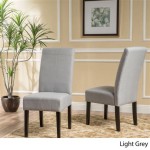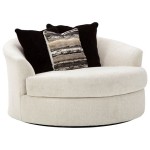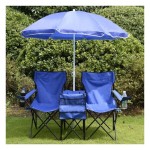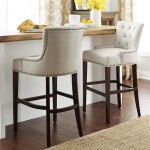The Enduring Appeal of Exposed Wood Frame Accent Chairs
Exposed wood frame accent chairs represent a confluence of design elements, blending structural integrity with aesthetic appeal. These chairs, characterized by their visible wooden frames, offer a versatile seating option suitable for a wide range of interior styles, from the rustic charm of farmhouse aesthetics to the clean lines of modern minimalism. The exposed frame not only provides structural support but also serves as a decorative element, showcasing the beauty of the wood grain and the craftsmanship involved in its construction.
The popularity of exposed wood frame accent chairs stems from their inherent ability to add warmth and texture to a space. Unlike fully upholstered chairs, these pieces allow the natural beauty of the wood to shine through, creating a visual connection to nature and imbuing the room with an organic feel. Furthermore, the exposed frame often reveals the details of the chair's construction, highlighting the joinery techniques and the overall artistry of the piece. This transparency in design contributes to a sense of authenticity and quality, making the chair a focal point in any room.
The selection of an exposed wood frame accent chair requires careful consideration of several factors, including the type of wood used, the style of the frame, and the overall design of the chair. The wood species will influence both the appearance and durability of the chair, while the frame style will determine its visual impact and suitability for different interior designs. The upholstery, if present, should complement the wood frame and enhance the overall aesthetic of the chair. Finally, the intended use of the chair and the space it will occupy should be taken into account to ensure that it meets both functional and aesthetic requirements.
Wood Selection and its Impact on Aesthetics and Durability
The choice of wood is paramount when selecting an exposed wood frame accent chair. Different wood species possess unique characteristics that influence their appearance, durability, and resistance to wear and tear. Hardwoods, such as oak, maple, and walnut, are prized for their strength and durability, making them ideal for load-bearing components of the chair. These woods also exhibit distinctive grain patterns and colors that contribute to their aesthetic appeal. Oak, for example, is known for its prominent grain and warm golden tones, while maple offers a smoother texture and lighter color palette. Walnut, with its rich dark brown hues and elegant grain, is often used in more formal or upscale settings.
Softwoods, such as pine and cedar, are generally less expensive than hardwoods but may not be as durable. While they can be suitable for decorative elements or less frequently used chairs, they are not typically recommended for high-traffic areas or heavy use. Pine, with its knotty appearance and warm yellow tones, is often used in rustic or farmhouse-style chairs. Cedar, known for its aromatic scent and insect-repelling properties, is sometimes used for outdoor furniture or in areas where moisture is a concern.
The finishing of the wood also plays a significant role in its appearance and protection. A clear finish allows the natural beauty of the wood grain to shine through, while a stained finish can alter the color and enhance the grain pattern. Painted finishes can provide a more contemporary look and offer greater versatility in terms of color selection. Regardless of the finish chosen, it is important to ensure that it is durable and resistant to scratches, moisture, and UV damage to protect the wood and maintain its appearance over time.
Beyond the type of wood, the wood's origin and processing also contribute to its quality and sustainability. Sustainably sourced wood from responsibly managed forests ensures that the chair is not contributing to deforestation or environmental degradation. Kiln-dried wood is less likely to warp or crack over time, ensuring the chair's structural integrity and longevity. Choosing a chair made from high-quality, sustainably sourced wood is an investment in both its appearance and its environmental impact.
Styles of Exposed Wood Frames: From Mid-Century Modern to Bohemian
The style of the exposed wood frame significantly contributes to the overall aesthetic of the accent chair. Different frame styles evoke different design periods and complement various interior styles. Mid-century modern frames, for example, are characterized by their clean lines, tapered legs, and minimalist design. These frames often feature smooth, rounded edges and are typically made from light-colored woods such as maple or birch. The emphasis is on simplicity and functionality, reflecting the design ethos of the 1950s and 1960s.
Bohemian-style frames, on the other hand, are often more ornate and eclectic. They may feature intricate carvings, turned legs, and a mix of different wood types. These frames often embrace natural imperfections and irregularities in the wood, adding to their organic and bohemian feel. The upholstery is often colorful and patterned, complementing the intricate details of the frame.
Farmhouse-style frames typically feature a more rustic and traditional aesthetic. They may be made from reclaimed wood or feature a distressed finish to create a sense of age and history. The frames often have a simple, straightforward design with straight lines and sturdy construction. The upholstery is typically neutral in color and made from natural materials such as linen or cotton.
Contemporary frames often blend elements from different styles to create a unique and modern look. They may feature clean lines and minimalist designs, but also incorporate unexpected details such as metal accents or geometric shapes. The wood used is often finished in a sleek, modern style, such as a high-gloss lacquer or a matte finish. The upholstery is often bold and contemporary, complementing the clean lines of the frame.
The frame style should be carefully considered in relation to the overall design of the room. A mid-century modern frame would complement a minimalist or Scandinavian-style interior, while a bohemian frame would be more suited to a eclectic or bohemian-style room. A farmhouse frame would be a natural fit for a rustic or farmhouse-style interior, while a contemporary frame could be used to add a modern touch to a variety of different spaces.
Upholstery and Fabric Choices: Balancing Comfort and Aesthetics
While the exposed wood frame is a defining feature of these chairs, the upholstery plays a crucial role in both comfort and aesthetics. The fabric chosen should complement the wood frame and enhance the overall design of the chair. It should also be durable, comfortable, and easy to maintain.
Leather is a popular choice for upholstery due to its durability, luxurious feel, and timeless appeal. Leather chairs are often seen as a sophisticated and investment piece, developing character and patina over time. However, leather can be more expensive than other upholstery fabrics and may require special care to maintain its appearance. Different types of leather, such as top-grain and full-grain, offer varying levels of quality and durability.
Fabric upholstery offers a wider range of options in terms of color, pattern, and texture. Linen, cotton, and velvet are popular choices for fabric upholstery, each offering its own unique characteristics. Linen is a natural fiber that is durable, breathable, and has a slightly textured feel. Cotton is a soft and comfortable fabric that is easy to clean and available in a wide range of colors and patterns. Velvet is a luxurious fabric that is soft to the touch and adds a touch of elegance to any room. Microfiber is a synthetic fabric that is durable, stain-resistant, and easy to clean, making it a popular choice for families with children or pets.
The color and pattern of the upholstery should be carefully considered in relation to the wood frame and the overall design of the room. Neutral colors such as beige, gray, and white are versatile and can complement a wide range of wood tones. Bold colors and patterns can add a pop of personality to the room and create a focal point. The texture of the fabric can also contribute to the overall aesthetic of the chair. A textured fabric, such as tweed or boucle, can add depth and dimension to the design.
The comfort of the upholstery is also an important consideration. The padding and support should be adequate to ensure that the chair is comfortable to sit in for extended periods of time. The fabric should be soft and breathable to prevent overheating. The overall design of the chair, including the angle of the backrest and the height of the armrests, should also contribute to its comfort.

Bev Accent Chair

Spanne Brown Leather Accent Chair Designer Chairs

Carlton Exposed Wooden Arm Accent Chair

Retro Scandinavian Style Accent Arm Chair Exposed Wood Frame Light Chevron Ebay

Clifton Linen Fabric Wood Frame Accent Chair Muse Merchant

Ocala Accent Chair Gray Homelegance Furniture Cart

Monroe Multi Color Camelback Exposed Wood Accent Chair 97h25 Lamps Plus

Echo 27 95 Fabric Accent Chair With Wood Arms And Legs Beige The Brick

Accent Chairs Objectshq

Marissa Brown Woven Jute Accent Chair 096r3 Lamps Plus








